Most images require the camera to be still but you can capture something completely different by deliberately moving it during the exposure. Kirk Norbury explains all you need to know about Intentional Camera Movement photography.

Intentional Camera Movement (ICM) photography is an abstract style of shooting that has no rules – it all comes down to moving your camera over a long exposure. I come from an art background and I believe this type of photography brings out the expressionist painter in all of us; instead of taking pictures with our camera we are now painting with it, and the sensor is our canvas. In this article I will be going through my own techniques so that you can create your own ICM images.
Equipment
There are no rules on which equipment you should use for ICM photography. The great thing about this style of photography is that it comes down to how you want to express yourself with your camera. The equipment I’ve laid out below is what I have found works best for the images that I like to create, so feel free to use this as a starting point for what to put in your kit bag.
Camera
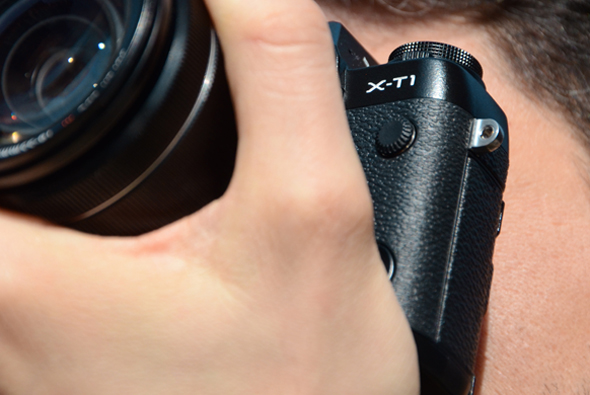
You can use any camera you want for ICM photography as long as you can control its shutter speed. So, you can use a cheap compact camera all the way up to the most advanced professional DSLR. A camera that has a manual exposure mode will benefit you more as it gives you complete control (and today, most do).
Lens
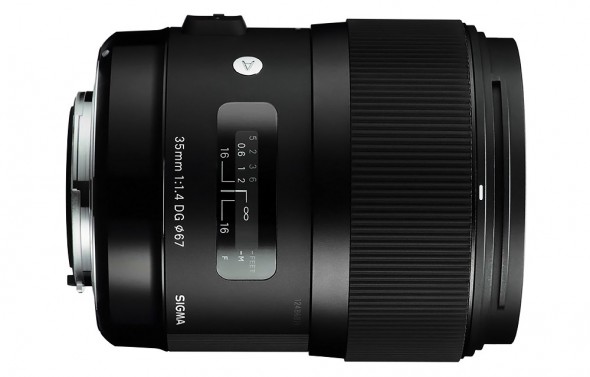
Again, there are no rules on which lens you have to use, as it all comes down to composition and framing the shot you are after. ICM photography is very creative so I advise you try it with every lens you own as they all will produce different images. I’ve had great results using lenses from 14mm all the way up to a super-telephoto 600mm!
Tripod
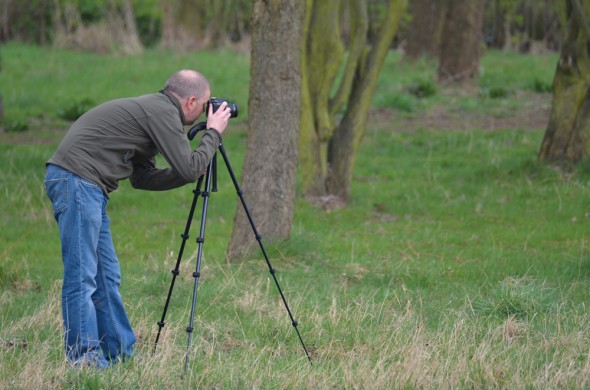
A tripod isn’t necessary for this style of photography as I always find it better to move the camera with my hands for a more fluid motion. Having said that, a tripod is great for controlling the movement of the camera. If, for example, I wanted to pan the camera from left to right and have a perfectly straight horizon, this would be a great time to use one.
ND filters
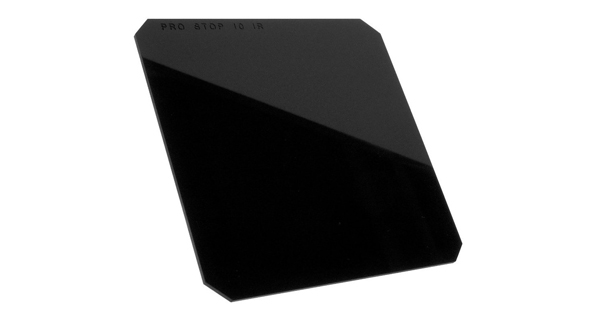
The main way to get motion blur in your shots is by having a long shutter speed. This is easily achievable at night but it may be more difficult during the day, even with the lowest ISO and smallest aperture available. This is a time I find using a neutral density filter very helpful as they reduce the amount of light entering the camera to allow you to use a longer shutter speed. I generally use a 4-stop ND filter when trying to get a slower shutter speed.
Setting up the shot

I still plan my shots before taking them. This could include writing down my ideas or trawling the internet looking for some inspiration. I find autumn to be one of my favourite times of year for this style of photography due to the variety of colour in the outdoor landscape.
When looking at a scene I try to picture what it would look like if I added motion to it. Are there contrasting colours? Are there interesting shapes in the scene? These are things to look for as colour can be your greatest friend when creating these types of images. I find trees and coastal horizons to be the best subjects for ICM photography as, when the movement is done in a certain way, the results can be really interesting.
Setting up the camera
One thing to remember with ICM photography is that depth of field is irrelevant. Your chosen aperture will have a slight effect on the final image but it really comes down to the shutter speed and where you focus the lens.
The main thing you need to focus on is getting the shutter speed that you’re after. I tend to shoot in the manual exposure mode as this gives me complete control over my camera and the settings will always be same when firing off a few frames. I tend to use a shutter speed of around 1/20sec or slower and, while you can use autofocus if you want, I find manually focusing gives more control.
When taking ICM images, I tend to fire off a large number of images as most of them won’t look that good – this gives me a better chance of getting the shot I want. I set my camera to continuous-shooting mode and have the camera fire at its highest frame rate. I always shoot in Raw as it will give me more flexibility to play around with the file later on. I also leave the white balance in Auto as I can change this when editing.
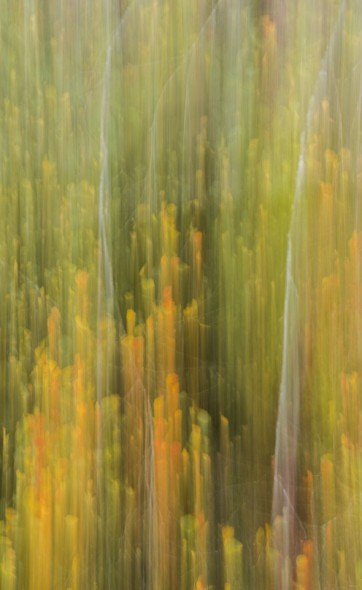
Taking the shot
When I go out with the intention of taking ICM images, I tend to have an idea in my head of what I’m after. I do, however, like to just walk freely with my camera and see what nature offers. When walking I’ll start taking shots every few metres; at first it can be quite random, but I find that after a few shots I see one I like, so I’ll stay in that area a little longer to see if I can get anything else. When taking the shot I tend to look through the viewfinder and hold the camera close to my body to allow me better control its movement. I will also use the live-view display on the camera and hold it away from me to see what different effects I can create. It’s really up to you how you hold your camera!
Techniques

Panning
Panning vertically or horizontally is one of the most popular forms of ICM photography. You can either do this handholding the camera or placing it on a tripod. A tripod can give you more of a precise motion and, if you level the tripod beforehand, you can get perfectly straight horizons. You can use a ball head or three-way pan-and-tilt head for this but, for the best effects, I find using a gimbal head is great.
Zooming
When using a zoom lens, it’s great to move the zoom ring while the shutter is open as this can create some really interesting shots in which it seems like objects are being thrown towards the camera. I tend to zoom from the widest angle to the telephoto and then back again. I will then vary the speed and the zooming to see what effects it creates.
Rotation
For something different I sometimes rotate my camera in a 360° motion. This creates a spiral-type image and works really well with the tops of trees.
Subjects
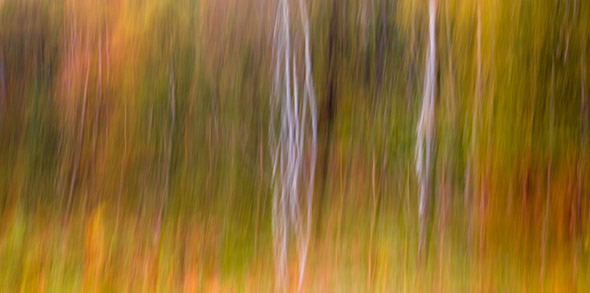
Trees
Trees are a great subject for ICM photography as you can find them pretty much anywhere in the UK. Again, you can move your camera in any direction to get something interesting, but I find panning the camera vertically works really well as it stretches out the shape of the trees and can give images a pleasingly coloured stripy result.
Sunsets and sunrises
Sunsets and sunrises can deliver an abundance of colours from deep oranges to subtle blues. This is usually a time I use a neutral density filter, in order to get a longer exposure due to the brightness of the sun. If your tripod has a spirit level, you will be able to achieve a perfectly straight horizon when panning your camera left or right.
City lights
If you live in a town or city you can use the evening lights as inspiration for your images, experimenting with effects that can be created when applying the methods mentioned above.
The great thing with ICM photography is that potentially anything can be a good subject for an image. You don’t necessarily know how the shot will turn out until you press the shutter-release button, so it’s worth giving something a shot if you think it might work.
Editing

I primarily edit my images in Adobe Lightroom as it is my favourite editing platform. After I’ve imported my images I will start to go through them and pick out the ones that stand out the most. From here, I apply small corrections to the image (exposure, contrast and saturation) before adjusting the white balance to something that replicates the colours I saw on the day of capture.
Conclusion
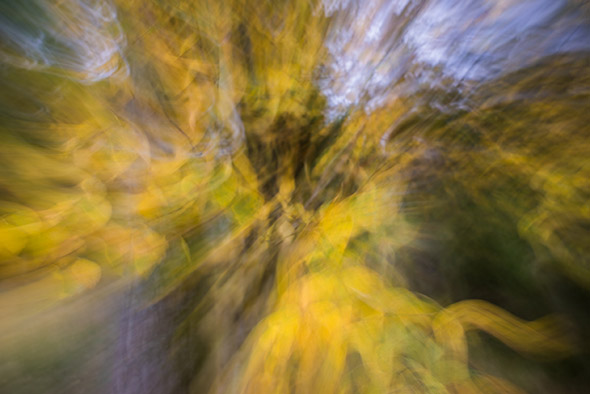
ICM photography is very easy and fun to do, and it gets you out with your camera. I’ve said it plenty of times before: there are no rules when trying this style of photography, and it’s completely up you how you handle the camera, providing your shutter speed is long enough to create some motion blur. The only way to get good at it is to get out there and take as many shots as you can to decide what you like – different photographers have different tastes. It’s all about having fun with your camera and being creative with your photography.
About the Author
Kirk Norbury is a nature photographer and cinematographer based in Ayr, Scotland. You can find out about the workshops he runs and view more of his work on his website.

